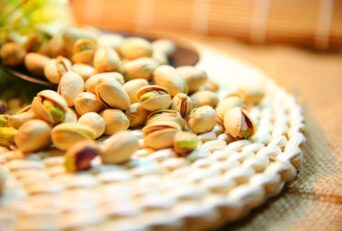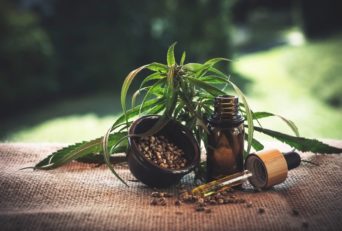If you wonder what Clavilla is, then you are at the right place. Find out uses, nutrients, benefits, side effects associated with Clavillia herb. Clavillia is a perennial herbaceous plant. It usually reaches from 50 to 100 centimeters of height.
It gives rise to enchanting flowers that bloom at around four in the afternoon. This fact has made them acquire the common name “4 o’clock flowers”.They have a sweet fragrance and they can be of multiple colors including white, red, purple, pink, or multicolored.
The sudden change in the color of the flowers has always been an interesting concept of genetic studies.Due to its fascinating appearance, this herb is cultivated worldwide as an ornamental plant.
However, Clavillia is also known for its therapeutic properties. Its extracts can counteract microbial infections, dysentery, diarrhea, stomach pain, and prevent cancer.
In this article, you can find information about this fascinating herb, its description, its uses, its side effects, and more.
Table of Contents
About The Plant
The scientific name of Clavillia is Mirabilis jalapa. It is also commonly known as the four o’clock flower, the Marvel of Peru or Beauty of the night.
The name Mirabilis has the Latin meaning of “wonderful”, and Jalapa is the name of a place in central North America. This herb belongs to the family Nyctaginaceae, and its original place of growth is said to be the Peruvian Andes, from where it was exported in 1540. There it was cultivated by the Aztecs for ornamental and medicinal purposes.
The plant can now be found naturalized in many parts of the world, including regions of America, Europe, Australia, Africa, and Asia. It grows best in tropical conditions.
Description
Clavillia is a perennial herb that reaches a height of up to 2 to 3 feet every season. They are wide and have profuse branches that are oppositely arranged.
The leaves are pointed, long, and petiolate. They measure from 9 to 13 centimeters in length. The roots are tuberous.
The herb is overall striking and sweet-scented.Its flowers are tubular and white, red, pink, yellow, purple, or multicolored. They can also present a streaked or mottled pattern. They tend to occur in groups of 3 to 7.
It blooms in the afternoon around 4 PM and they close by the next morning. Due to this, the plant is popularly known as the 4 o’clock plant.The flowers of the plant have no real petals. The calyx is in the place where the corolla should have been.
The fruit is a small, one-seeded capsule. It is also known as anthocarp. Its seeds are poisonous.
The plant mainly reproduces by self-pollination or with the help of insects and seed dispersal.
Clavillia is considered a sleeper weed or minor weed. It can grow in crop fields outcompeting the indigenous vegetation and appear in other disturbed zones too. It is resistant to droughts and other adversities.
Chemical Properties Of Clavillia
The plant is rich in several chemically active compounds, especially triterpenes, proteins, flavonoids, steroids, alkaloids.
It counts with a particular type of proteins based on amino acids. They are known as mirabilis antiviral proteins or MAPs and they are especially found in the root tubers.
From the flowers, compounds like miraxanthins, indicaxanthin, and vulgaxanthin have been isolated.
Other components that have been found are stigmasterol, oleanolic acid, brassicasterol, rotenoids, B-sitosterol, and ursolic acid.
These properties of Clavillia give it anti-proliferative against tumor cells, as well as antimicrobial and antifungal features.
Medicinal Uses Clavillia Plant
Clavillia is popularly known as a sweet-scented and beautiful ornamental plant.
However, it is also used worldwide for its therapeutic properties, which are supported by the biological traits of this plant. These include a natural ability to fight viruses, fungi, and other microbes.
The versatility of this herb suggests that more applications and benefits are yet to be discovered.
As for now, these are the various medicinal uses of the plant:
- It is employed as a herbal remedy against viral diseases and their symptoms. These diseases include hepatitis, herpes, influenza, mumps, and viral infections affecting the upper respiratory tract.
- The flowers of Clavillia are added in bathing water in order to remediate flu and cold.
- Clavillia is also used against fungal infections, especially those caused by candida and yeast.
- The plant is also useful in the treatment of several bacterial infections.
- It can resolve and prevent skin problems like eczema, dermatitis, rashes, acne, liver spots, and topical infections caused by fungi and
- Its consumption is an effective remedy for abnormal vaginal discharge and infections, as well as sexually transmitted diseases.
- The decoction or infusion made from the roots of the plants has been traditionally used as a diuretic
- The powdered extracts of the plant can be inhaled to alleviate The scent of dry flowers may also be used for the same purpose.
- Skin afflictions like leprosy can be treated with the root decoction of Clavillia plant. It is also effective against regular skin rashes or wounds.
- The consumption of the root concoction is effective in removing internal parasites of the digestive system.
- The plant is used as a remedy for For this, the roots are ground and mixed with black pepper to form a paste that should be ingested orally.
- Fungal infections of the skin can be treated with the topical application of the juice extracted from the Clavillia plant.
- The root tubers of Clavillia are known to have a laxative and diuretic effect. They promote a healthy digestion and improve bowel movement.
- The juice extracted from the flowers of the plant can be used as a topical treatment to clear herpes lesions.
- The flower juice can also reduce and treat earaches by pouring a drop of it into the ears.
- Skin conditions such as itchiness, eczema, herpes, spots, and infections can be treated with the application of a paste made from the combination of leaves and flowers.
- Root concoctions have been also used to combat leucorrhea, edema, diarrhea, dysentery, abdominal colic, liver disorders, and syphilis.
- The decoction of the entire plant can be used in the treatment of bee and scorpion stings, as well as dysentery, and infected wounds.
- In some places, the plant has also be used to treat bone fractures.
- Inflammation and abscesses can be treated with a decoction of the leaves.
- The roots are also used as an aphrodisiac and as a
- Muscle swelling and inflammation can be treated with the help of the root paste. It also helps in relieving muscle
- The root paste is also used in the treatment of scabies.
- Fever and indigestion can be combatted with the help of the root juice.
- A mixture of root powder and corn flour is used in the treatment of menstrual disorders.
- The plant juice is applied to treat skin urticaria, bruises, swellings, inflammations, and discolorations.
- Carbuncles can be treated by concoctions made from the root tubers.
- The plant extracts also are known to have anti-tumor.
- The consumption of this plant’s concoction has a detoxifying and cleansing effect on the body system.
Preparation & Dosage Of Clavillia Herb
The herb is consumed in the form of root infusion, tincture, tablets or capsules containing the root in its powder form.
Clavillia root tea or infusion can be prepared as follows:
- Add a teaspoon of Clavillia root powder into a cup of water.
- Pour boiling water over the powder in the cup.
- Allow it to steep for at least 10 minutes so that the water assimilates all the properties of the herb.
- Let the powder settle at the bottom of the cup before drinking it, or strain it to obtain a clear infusion.
- Drink it while it is still warm.
- The dosage to be consumed is half a cup at a time.
Dosage
- The dosage of the standard root infusion is half a cup at a time, twice per day.
- The tincture in the ratio 4:1 can be taken twice per day in a dosage of 1 to 2 ml.
- Tablets or capsules containing 1 gram of the powdered root should be consumed twice daily.
Other Uses Of Clavillia Herb
Apart from its medicinal purposes, Clavillia has other uses too, as follows:
- In gardening: It is used widely as an ornamental plant due to the appearance of its flowers.
- As pigment source: Its flowers have used a source of food coloring agents or pigments. A crimson red dye is extracted from them and it is used in jellies and baked items.
- As food item: The tender and young leaves of the plant can be cooked and eaten. But they are recommended to be eaten in cases of food emergency only.
- As condiment: Traditionally the seeds have been crushed and used as a peppery food condiment. Although they are now known to be toxic and their consumption is not advisable.
- As a cleansing and tonic beverage: The tuberous roots can be grated and consumed with cold water to prevent and remove intestinal parasites. They also promote a healthy bowel movement and a clean stomach.
- In beauty products: The seeds of some varieties of Mirabilis are used in their powder form in dyes and cosmetics. Decoctions of the roots are used to remove freckles and other marks on the skin.
- In soil remediation: The plant can also be used to remediate the condition of soils polluted with heavy metals like cadmium.
Side Effects Of Clavillia Herb
The plant is beneficial in numerous ways but it should be kept in mind that it has certain contraindications and side effects.
One Should Be Cautious About The Following Facts
- The roots of the plant can cause disturbances in the digestive system when consumed.
- The seeds have neurotoxic chemicals. This has a poisoning effect on the body and should not be ingested at any cost.
- The chemicals present in Clavillia have an abortive effect. The plant has a uterine stimulant action and therefore it is better to avoid its consumption during pregnancy.
- The ingestion of the plant may cause allergic reactions in some people, although this is rare.
Clavillia is a beautiful ornamental plant that has many other uses, especially in the therapeutic field. It can be consumed for the improvement of the health as required, but care should be taken to not to exceed the dosage.
You May Like Reading






